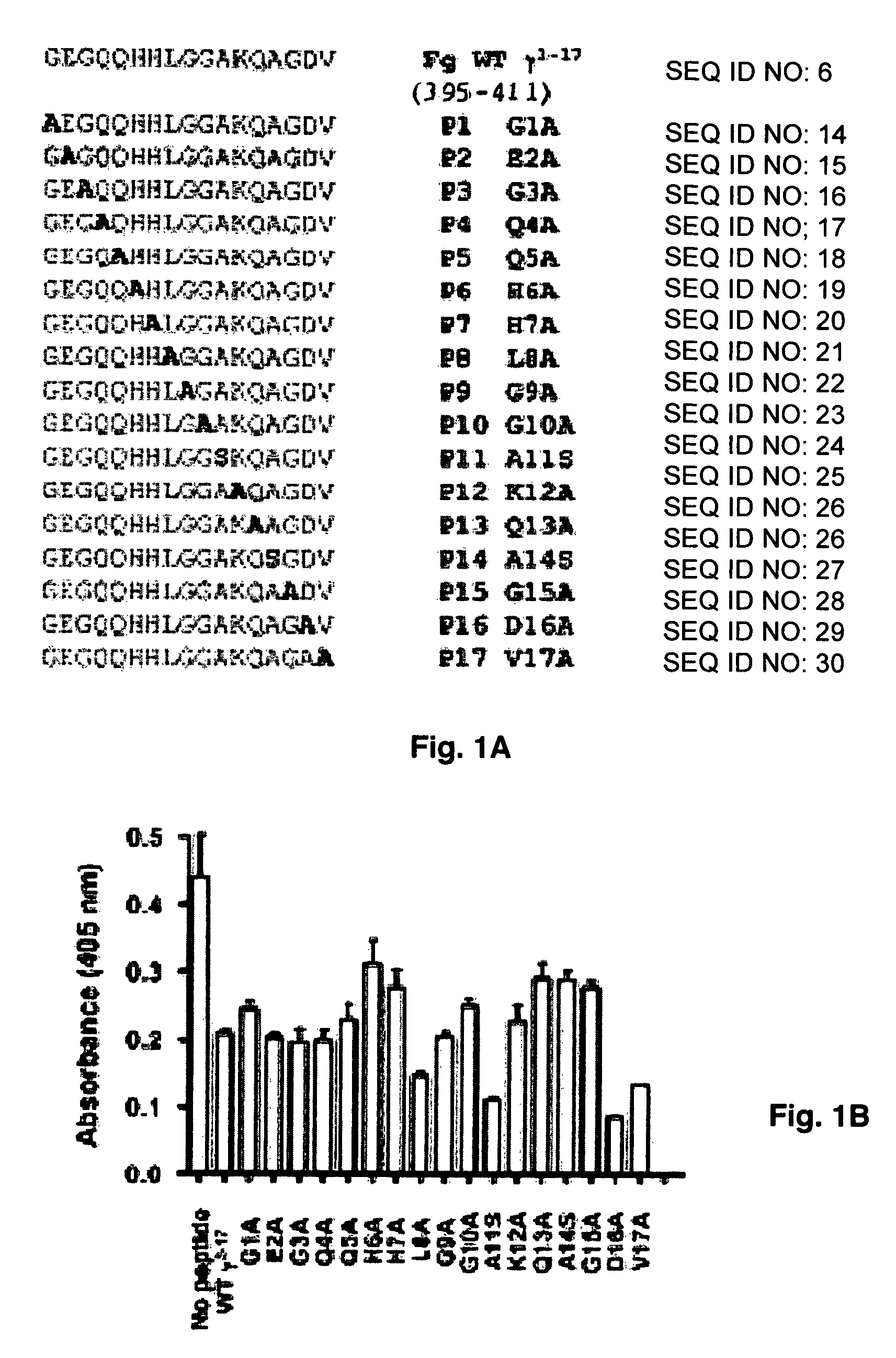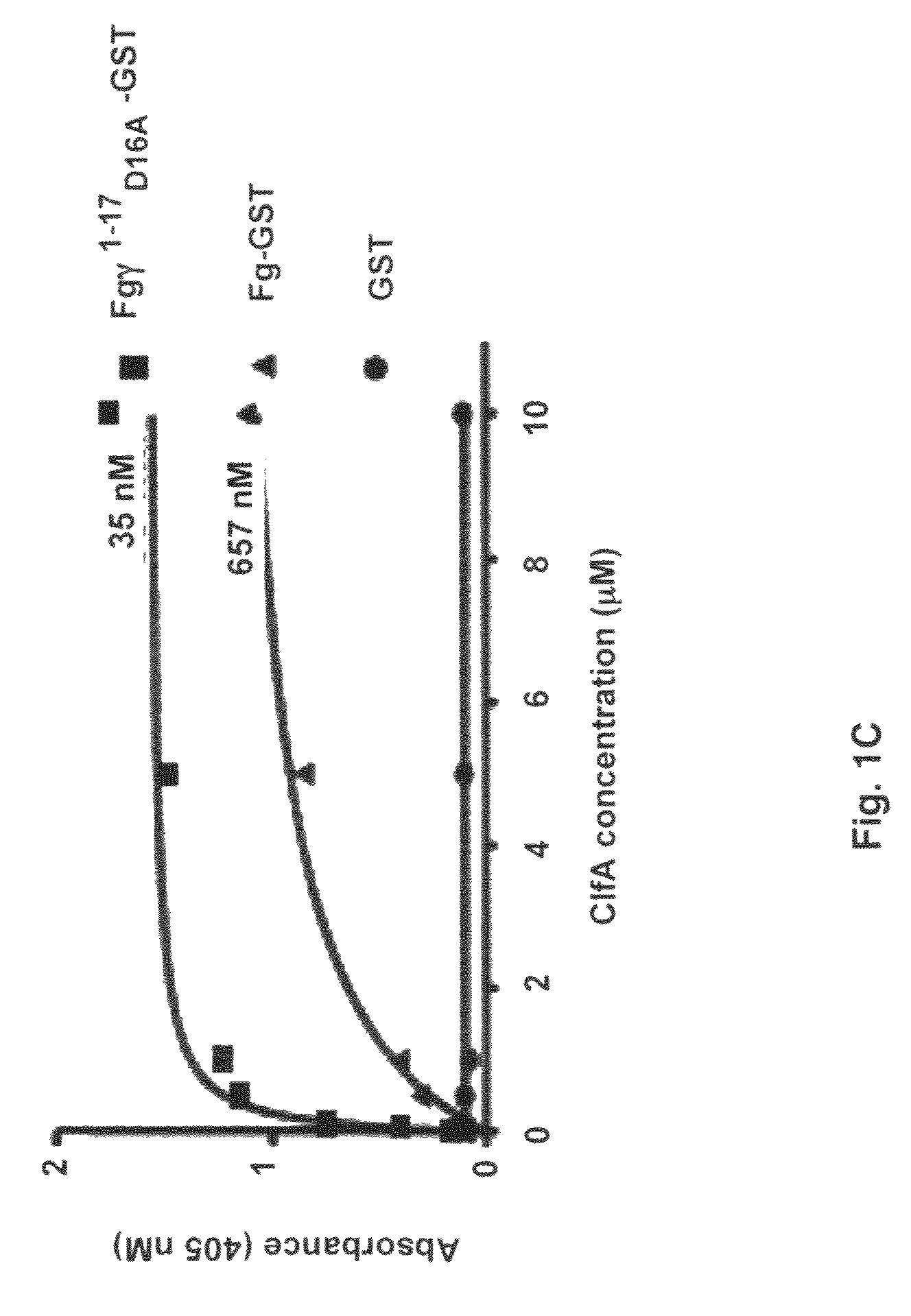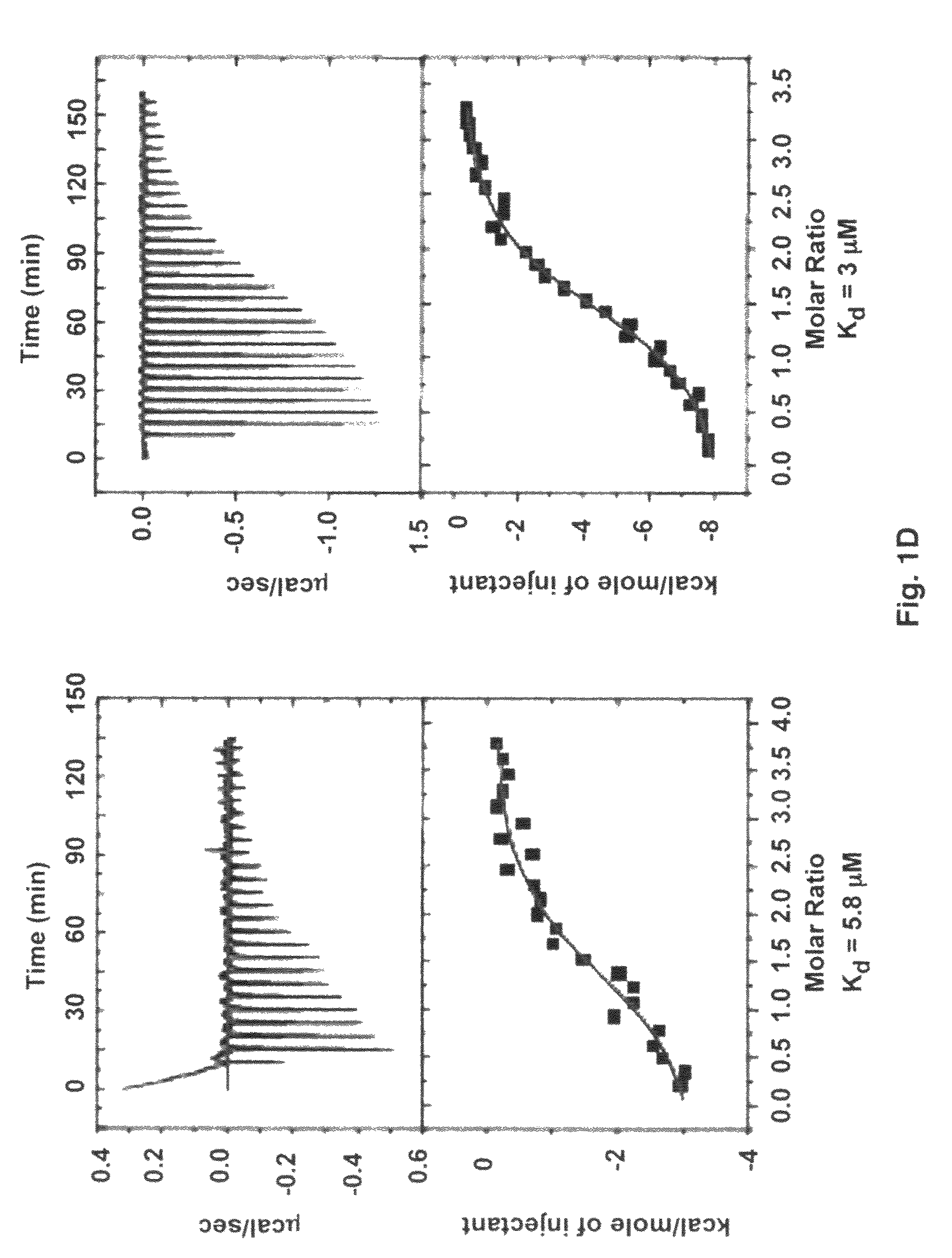Crystal structure of Staphylococcus aureus clumping factor A in complex with fibrinogen derived peptide and uses thereof
a staphylococcus aureus and fibrinogen-derived peptide technology, applied in the field of crystal structure of staphylococcus aureus clumping factor a, can solve the problems of insufficient structural characterization of how clfa binds fg and its structure, and achieve the effect of little inhibitory effect and high affinity
- Summary
- Abstract
- Description
- Claims
- Application Information
AI Technical Summary
Benefits of technology
Problems solved by technology
Method used
Image
Examples
example 1
Bacterial Strains, Plasmids and Culture Conditions
[0062]Escherichia coli XL-1 Blue (Stratagene) was used as the host for plasmid cloning and protein expression. Chromosomal DNA from S. aureus strain Newman was used to amplify the ClfA DNA sequence. All E. coli strains containing plasmids were grown on LB media with ampicillin (100 μg / ml).
example 2
Manipulation of DNA
[0063]DNA restriction enzymes were used according to the manufacturer's protocols (New England Biolabs) and DNA manipulations were performed using standard procedures (30) (Sambrook and Gething, 1989). Plasmid DNA used for cloning and sequencing was purified using the Qiagen Miniprep kit (Qiagen). DNA was sequenced by the dideoxy chain termination method with an ABI 373A DNA Sequencer (Perkin Elmer, Applied Biosystems Division). DNA containing the N-terminal ClfA sequences were amplified by PCR (Applied Biosystems) using Newman strain chromosomal DNA as previously described (31). The synthetic oligonucleotides (IDT) used for amplifying clfA gene products and for cysteine mutations are listed in Table I.
[0064]
TABLE 1ClfA2295′-CCCGGATCCGGCACAGATATTACGAAT-3′(SEQ ID NO: 1)ClfA5455′-CCCGGTACCTCAAGGAACAACTGGTTTATC-3′(SEQ ID NO: 2)For disulfide mutant:rClfA3275′-TGCTTTTACATCACATTTAGTATTTAC-3′(SEQ ID NO: 3)fClfA3275′-GTAAATACTAAATGTGATGTAAAAGCA-3′(SEQ ID NO: 4)ClfA5415′-C...
example 3
Construction of Disulphide Mutants (Stable Form of ClfA)
[0065]Cysteine mutations were predicted by comparing ClfA221-559 to SdrG(273-597) disulfide mutant with stable closed conformations (32) and by computer modeling. A model of ClfA in closed conformation was built based on the closed conformation of the SdrG-peptide complex (25). The Cβ-Cβ distances were calculated for a few residues at the C-terminal end of the latch and strand E in the N2 domain. Residue pairs with Cβ-Cβ distance less than 3 Å were changed to cysteines to identify residues that could form optimum disulfide bond geometry. The D327C / K541C mutant was found to form a disulfide bond at the end of the latch. The cysteine mutations in ClfAD327C / K541C were generated by overlap PCR (33-34). The forward primer for PCR extension contained a BamHI restriction site and the reverse primer contained a KpnI restriction site. The mutagenesis primers contained complementary overlapping sequences. The final PCR product was digest...
PUM
| Property | Measurement | Unit |
|---|---|---|
| total volume | aaaaa | aaaaa |
| total volume | aaaaa | aaaaa |
| pH | aaaaa | aaaaa |
Abstract
Description
Claims
Application Information
 Login to View More
Login to View More - R&D
- Intellectual Property
- Life Sciences
- Materials
- Tech Scout
- Unparalleled Data Quality
- Higher Quality Content
- 60% Fewer Hallucinations
Browse by: Latest US Patents, China's latest patents, Technical Efficacy Thesaurus, Application Domain, Technology Topic, Popular Technical Reports.
© 2025 PatSnap. All rights reserved.Legal|Privacy policy|Modern Slavery Act Transparency Statement|Sitemap|About US| Contact US: help@patsnap.com



